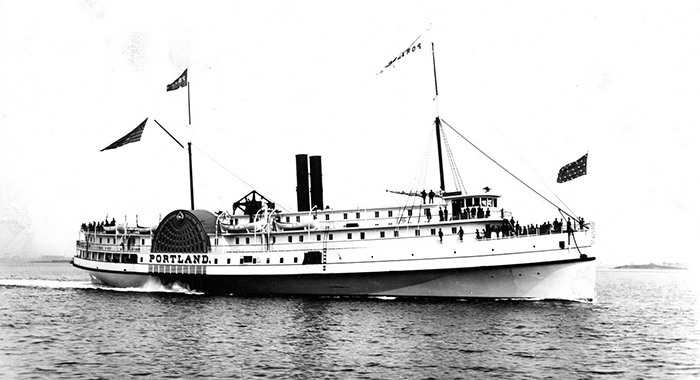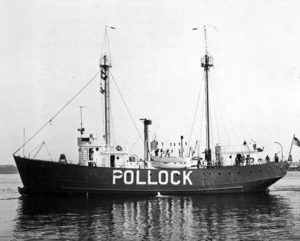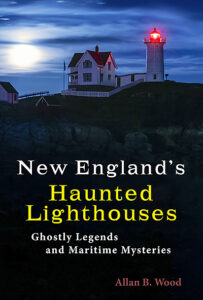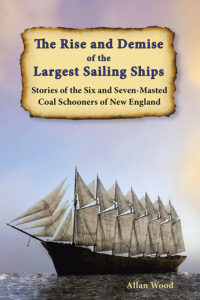The Steamship Gloucester Rides Out the Perfect Storm, Known as the “Portland Gale”
One of the worst storms in New England’s history occurred during the Thanksgiving week of 1898, when two storm systems, one from the Great Lakes and the other from the South, came together over the New England coast. The collision created a “perfect storm” of blinding snow, sleet, and hurricane-force winds gusting to over 100 miles per hour, leaving destruction all along the New England coastline.
Perhaps one of the most famous New England ship disasters of the 19th century occurred during this awful storm and involved the sinking of one of the largest steamships, the Portland. It was built to be 280 feet long and 42 feet wide, and could carry up to 800 passengers with cargo between Boston and Portland, Maine. She had a load of passengers to bring home from Thanksgiving on Saturday when it got caught in the storm’s grip as it tried to head north from Boston. As the winds increased to hurricane force, the Portland was forced further south until, by Sunday, November 27th, she was floundering off the coast of Cape Cod and sank with all her passengers and crew near Provincetown.
During the storm, another steamer took a southern route out of Boston. The Gloucester, with Captain Francis Howes at the helm, was the only steamer that ventured out en route through the storm to its destination in Norfolk, Virginia. The captain was known as one of the most experienced on the coast. With a whole load of cargo packed tightly together to keep the ship heavy enough to drill through the raging seas, he ran the vessel at its optimum speed, intending that if it were to hit something, it would send the ship well ashore, giving all the crew a chance of survival. He relied not on buoys and markers, useless in such poor visibility, but on his own experience and instincts to guide the vessel through one of New England’s worst storms.
The Gloucester left Boston around 4 o’clock that Saturday afternoon on November 26, 1898, a few hours before the Portland set sail on the same route towards Norfolk, Virginia. By evening, the winds had become fierce, blowing at gusts of over 70 miles per hour, with blinding snow, as the Gloucester started heading through Vineyard Sound. No discernible buoys, lights, or sounds could be heard through the storm’s ferocity, blinding snow, and the spray washing over the deck as the Gloucester plowed through the heavy seas. As the hurricane-force winds would blow the vessel off course, the captain would wait patiently for brief lulls during the storm to set his boat back on its charted route.
When the Gloucester approached Vineyard Sound, Captain Howes knew he was near the vicinity of the Pollock Rip Shoals Lightship and was waiting to hear the ship’s whistling and to catch a glimpse of its light when the vessel appeared a short distance right in front of him. Luckily, he was able to maneuver the Gloucester around the lightship and narrowly avoided a collision as his boat stayed on course. He then, by experience, felt he was near the Cross Rip Lightship when he again nearly came directly upon the vessel but steered clear of her as he headed around Martha’s Vineyard. He could only imagine the fear and anguish the crews of both lightships must feel as the winds were at hurricane force, bashing mountainous waves against their stationary anchored vessels, and the Gloucester nearly missing them. Again, by experience and carefully watching for lulls in the storm, Captain Howes told his mate they should see the light of West Chop Lighthouse shortly, which gave the captain confidence they were still on course and remarkably still on schedule.
As the Gloucester made its way past Block Island heading southward, the storm became less intense the further south the vessel went. The Gloucester, with the trained eye of Captain Howes, made it to Norfolk, Virginia, by 6 a.m. Monday, November 28, safely and, to the astonishment of everyone, on schedule. The fantastic journey won the captain the admiration of all his peers.
The storm lasted over 30 hours and packed coastal wind gusts of 100 mph. It buried much of New England in two feet of snow, washed away coastal buildings and destroyed neighborhoods, sank or grounded hundreds of boats and ships, and was responsible for killing more than 400 people. The blizzard had destroyed telegraph and telephone lines from Cape Cod and had buried or washed out railroad tracks. When the storm ended, over 140 ships were lost, and it also changed the course of the North River, dividing a portion of Scituate, Massachusetts.
The 1898 storm was one of the worst storms New England had ever experienced. However, with the sinking of the Portland, which resulted in nearly 200 lives lost, the Gale of 1898 has been known as the “Portland Gale.” It is not known precisely how many passengers were aboard or who they were, as the only passenger list was aboard the vessel. As a result of this tragedy and others, new regulations were finally established for all passenger ships to leave a second list of passengers on shore before departure, as well as a list to be sent to their destination, if possible.
Books to Explore
New England’s Haunted Lighthouses:
Ghostly Legends and Maritime Mysteries
Uncover the mysteries of New England’s haunted lighthouses! Uncover ghostly tales of lingering keepers, victims of misfortune or local shipwrecks, lost souls, ghost ships, and more. Many of these accounts begin with actual historical events that later give rise to unexplained incidents. Immerse yourself in the tales associated with these iconic beacons!
The Rise and Demise of the Largest Sailing Ships:
Stories of the Six and Seven-Masted Coal Schooners of New England
In the early 1900s, New England shipbuilders constructed the world’s largest sailing ships amid social and political reforms. These giants were the ten original six-masted coal schooners and one colossal seven-masted vessel, built to carry massive quantities of coal and building supplies, and measured longer than a football field! This self-published book, rich in color and vintage images, showcases the historical accounts that accompanied these mighty ships.
Available also from bookstores in paperback, hardcover, and as an eBook for all devices.

Book – Lighthouses and Coastal Attractions in Southern New England: Connecticut, Rhode Island, Massachusetts
Lighthouses and Coastal Attractions of Southern New England:
Connecticut, Rhode Island, and Massachusetts.
This 300-page book provides memorable human interest stories from each of the 92 lighthouses. You can explore plenty of indoor and outdoor coastal attractions, including whale-watching excursions, lighthouse tours, windjammer sailing tours, parks, museums, and even lighthouses where you can stay overnight. You’ll also find plenty of stories of hauntings around lighthouses.
Lighthouses and Coastal Attractions of Northern New England:
New Hampshire, Maine, and Vermont.
This 300-page book provides memorable human interest stories from each of the 76 lighthouses. It also describes and provides contact info for plenty of indoor and outdoor coastal attractions and tours. These include whale watching, lighthouse tours, unique parks, museums, and lighthouses where you can stay overnight. There are also stories of haunted lighthouses in these regions.
Copyright © Allan Wood Photography; do not reproduce without permission. All rights reserved.
Join, Learn, and Support The American Lighthouse Foundation








